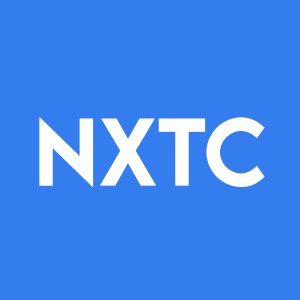NextCure Publishes Non-Clinical Data Demonstrating Anti-Siglec-15 Treatment Prevented Bone Loss Due to Immobilization from Acute Spinal Cord Injury
BELTSVILLE, Md., Dec. 21, 2023 (GLOBE NEWSWIRE) -- NextCure, Inc. (Nasdaq: NXTC), a clinical-stage biopharmaceutical company committed to discovering and developing novel, first-in-class immunomedicines to treat cancer and other immune-related diseases, today announced the publication of a manuscript titled “Anti-Siglec-15 Antibody Prevents Marked Bone Loss after Acute Spinal Cord Injury-Induced Immobilization in Rats” in JMBR Plus, a journal of the American Society for Bone and Mineral Research (ASBMR). The data demonstrated that NC605, a novel anti-Siglec-15 (S15) antibody, prevented bone loss, but more importantly preserved bone strength in animal models of severe immobilization resulting from acute spinal cord injury.
Following spinal cord injury, patients typically suffer rapid and extensive bone loss. While anti-resorptive therapies have shown some efficacy in inhibiting bone loss, these agents also inhibit bone formation. In preclinical testing, NC605 has been shown to prevent bone loss by inhibiting osteoclast maturation and bone resorption by binding S15, which is expressed on the cell surface of immature osteoclasts and upregulated in differentiated osteoclasts. Unlike anti-resorptive therapies, NC605 enhances osteoblast recruitment, resulting in overall enhanced bone quality.
“Bone loss due to severe immobilization is rapid, progressive and severe. Skeletal fragility in patients with immobilization injuries, including many veterans under long term care in VA centers, places them at great risk for fractures. With no practical interventions currently available, there is a substantial unmet clinical need for therapeutics that can prevent bone loss due to severe immobilization,” said Solomon Langermann, Ph.D., NextCure’s chief scientific officer. “The data highlight the unique and favorable features of Siglec-15 antibodies relative to current anti-resorptive agents, and suggest encouraging potential for NC605 to mitigate the striking bone loss and preserve bone strength in patients with spinal cord injury or other immobilization injuries.”
In the animal model of spinal cord injury, bone mineral density (BMD) was assessed and compared to control animals. Key findings from the study include:
- Treatment with anti-S15 antibody completely prevented loss of BMD in the femur and tibia.
- High-resolution imaging analysis revealed almost complete prevention of trabecular bone volume loss.
- Blood and bone structure analyses revealed that the anti-S15 antibody was able to greatly inhibit bone resorption while maintaining bone formation and quality.
- Ex vivo analysis showed increased numbers of osteoblasts as well as increased levels of mRNA encoding osteocalcin and bone sialoprotein (BSP), markers of bone formation and integrity, demonstrating a unique ability of the antibody to reduce osteoclast formation and bone resorption while promoting osteoblast recruitment to maintain bone integrity.
The data were generated in collaboration with Dr. Weiping Qin, Icahn School of Medicine at Mount Sinai and collaborators at the Spinal Cord Damage Research Center, James J. Peters Veteran Affairs Medical Center, Bronx, New York.
About NextCure, Inc.
NextCure is a clinical-stage biopharmaceutical company committed to discovering and developing novel, first-in-class immunomedicines to treat cancer and other immune related-diseases. Our focus is to bring hope and new treatments to patients who do not respond to current therapies, patients whose disease progresses despite treatment and patients with diseases not adequately addressed by available therapies. www.nextcure.com
Cautionary Statement Regarding Forward-Looking Statements
Statements made in this press release that are not historical facts are forward-looking statements. Words such as “expects,” “believes,” “intends,” “hope,” “forward” and similar expressions are intended to identify forward-looking statements. Examples of forward-looking statements in this press release include, among others, statements about NextCure’s plans, objectives, and intentions with respect to the discovery of immunomedicine targets and the discovery and development of immunomedicines. Forward-looking statements involve substantial risks and uncertainties that could cause actual results to differ materially from those projected in any forward-looking statement. Such risks and uncertainties include, among others: our limited operating history and no products approved for commercial sale; our history of significant losses; our need to obtain additional financing; risks related to clinical development, including that early clinical data may not be confirmed by later clinical results; risks that pre-clinical research may not be confirmed in clinical trials; risks related to marketing approval and commercialization; and the unproven approach to the discovery and development of product candidates based on our FIND-IO platform. More detailed information on these and additional factors that could affect NextCure’s actual results are described in NextCure’s filings with the Securities and Exchange Commission (the “SEC”), including NextCure’s most recent Form 10-K and subsequent Form 10-Q. You should not place undue reliance on any forward-looking statements. NextCure assumes no obligation to update any forward-looking statements, even if expectations change.
Investor Inquiries
Timothy Mayer, Ph.D.
NextCure, Inc.
Chief Operating Officer
(240) 762-6486
IR@nextcure.com








